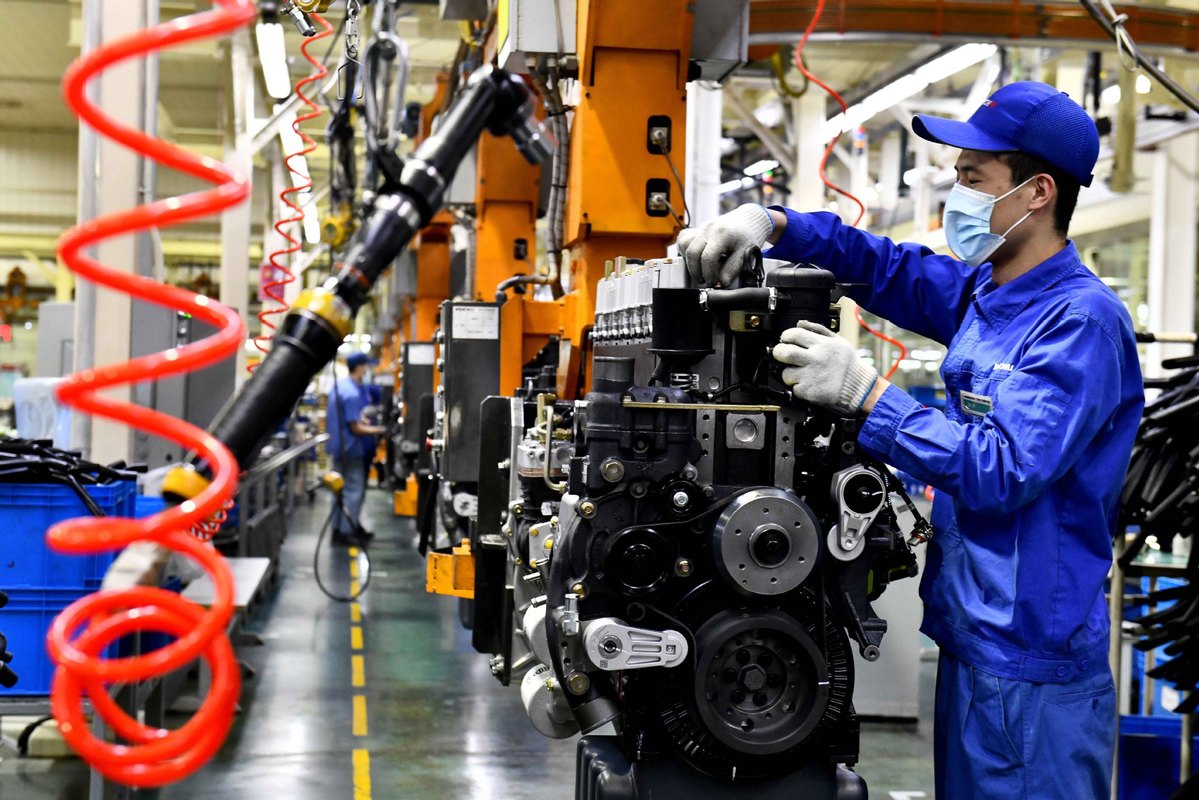Policy easing key to nation's economic growth momentum

Workers assemble engines at a factory in Weifang, Shandong province, on Dec 6, 2021. [Photo/Xinhua]
China's economic growth momentum will pick up next year, supported by a moderate policy easing, and rebalancing will become more significant as the country's development shifts toward a high-quality model, the World Bank said on Wednesday.
The growth rate of the world's second-largest economy is projected to moderate to 5.1 percent in 2022, after achieving 8 percent this year as predicted due to a low base, according to the bank's China Economic Update report.
Meanwhile, China's headline, or total, inflation is projected to rise to 1.9 percent, compared with a likely lower level of 0.9 percent in 2021, it said.
Core inflation, which excludes volatile food and energy prices, is projected to increase steadily, thanks to the firming of consumer spending. The producer price index-a key gauge of inflation-may peak this year and decline to around 3 percent in 2022, amid a high base effect and easing supply constraints, the report said.
China's economic growth slowed in the second half of this year, following a quick rebound in the first half, mainly because of the base effects, diminished support from exports, and the government's continued deleveraging efforts, according to economists.
But the policy easing, which has become more obvious since the annual Central Economic Work Conference, which concluded on Dec 10, will cushion the slowdown next year, they said.
The World Bank expects to see moderate fiscal easing in China next year. Monetary policy may continue to focus on maintaining financial market stability, and the central bank is projected to provide liquidity support when necessary.
Andrew Fennell, senior director of Fitch Ratings (Hong Kong), said earlier that China's strong financial buffers can offset rising growth pressures associated with pandemic-related uncertainties and the property sector stress.
The central bank recently announced a cut in the benchmark lending rate, the loan prime rate, by 5 basis points, the first cut in 19 months. The Ministry of Finance also announced an earlier-than-usual delivery of a new quota for the local government special bond, to accelerate government-led investment.
"We believe macro policy easing will continue to advance next year, leading to improved growth prospects in the second half of 2022," said Fennell, adding that industrial and export-sector resilience will provide stability to the labor market.
However, as China's COVID-19 strategy is likely to remain broadly unchanged for much of the next year, some downside risks could emerge amid renewed domestic COVID-19 outbreaks.
This could require more broad-based and longer-lasting restrictions leading to greater disruption to economic activity, according to the World Bank.
A downturn in the highly leveraged property sector poses another downside risk, which could have "significant economy-wide reverberations", it added.
The World Bank's report highlighted the importance of "rebalancing" in China's economy, during a process from recovery to high-quality growth.
"The pandemic and subsequent recovery have worsened domestic and external economic imbalances," said Martin Raiser, World Bank country director for China, Mongolia and Korea.
"The transition to high-quality growth is a challenging rebalancing act, but structural reforms could help reduce policy trade-offs."
Photos
Related Stories
- Measures expected to foster new economic upturn
- Resilience in China's real economy shores up growth in November
- Experts and business leaders' take on Central Economic Work Conference
- China expected to leverage multiple tools to stabilize 2022 growth
- Central Economic Work Conference 2021: achievements and goals
Copyright © 2021 People's Daily Online. All Rights Reserved.










